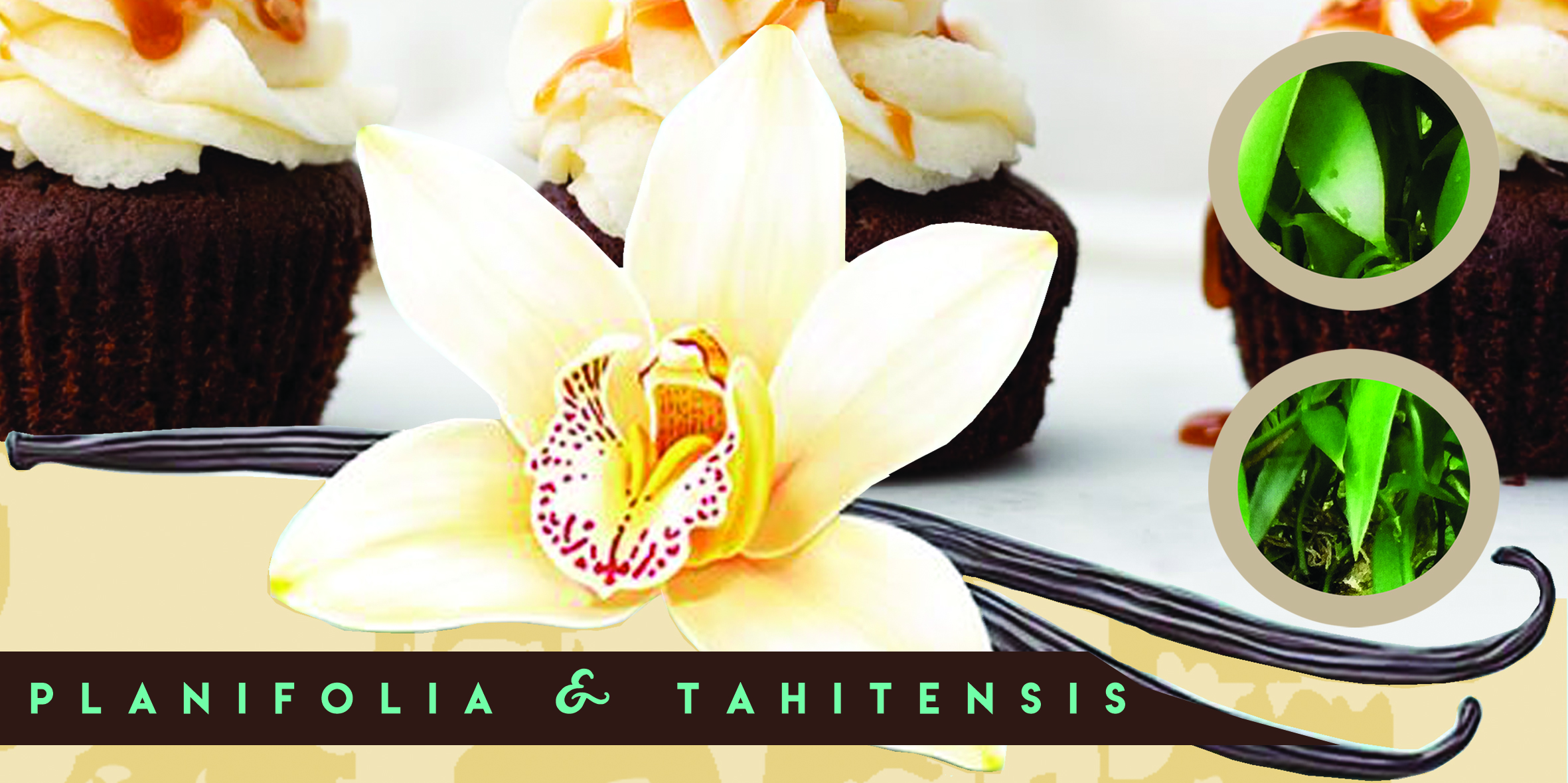b l o g
m a y 2 0 2 1

By Piero Bianchessi, Former Owner and Operator of Venui Vanilla
Today we’re examining the differences between the species used in the food industry for flavouring; Vanilla planifolia and Vanilla tahitensis.
Vanilla Planifolia

(1) Is more vigorous
(2) Has a higher yield
(3) Has a higher vanillin content
(4) Is more suitable for extract
(5) Requires 3+ years before producing
(6) Requires a longer period of dry weather to flower
(7) Fruit is dehiscent – it splits when ripe
(8) Harvesting time is critical
Vanilla Tahitensis

(1) Is less vigorous
(2) Has a lower yield
(3) Has a lower vanillin content
(4) Is less suitable for extract
(5) Has a specialised market
(6) Produces earlier (from year 2)
(7) Requires a shorter period of dry weather to flower
(8) Fruit doesn’t split
(9) Harvest timing is less critical
Vanilla fragans (syn. planifolia) is native to Mexico and now widely grown in tropical countries around the world. Vanilla tahitensis is the hybrid result from the cross between V. planifolia and V. odorata. It is yet unknown where and when this cross happened. Today, V. tahitensis is grown mostly in Tahiti and Papua New Guinea, its total yearly production is less than 5% of the V. planifolia production.
The two species share identical cultivation techniques, but differ on their harvesting and the first curing steps:
HARVEST : As V. tahitensis has no risk of splitting it may be left on the vine until more than 50% of the bean turns brown. After harvest the bean is kept in the shade until fully brown.
WATER/SUN ‘KILLIG’ : When fully ripe the V. tahitensis can be ‘killed’ by quickly scalding the beans in water at 65°C OR slowly exposing the beans for two or three days inside a clear plastic bag (or blankets). The curing stages after the ‘killing’ are identical for both species.
